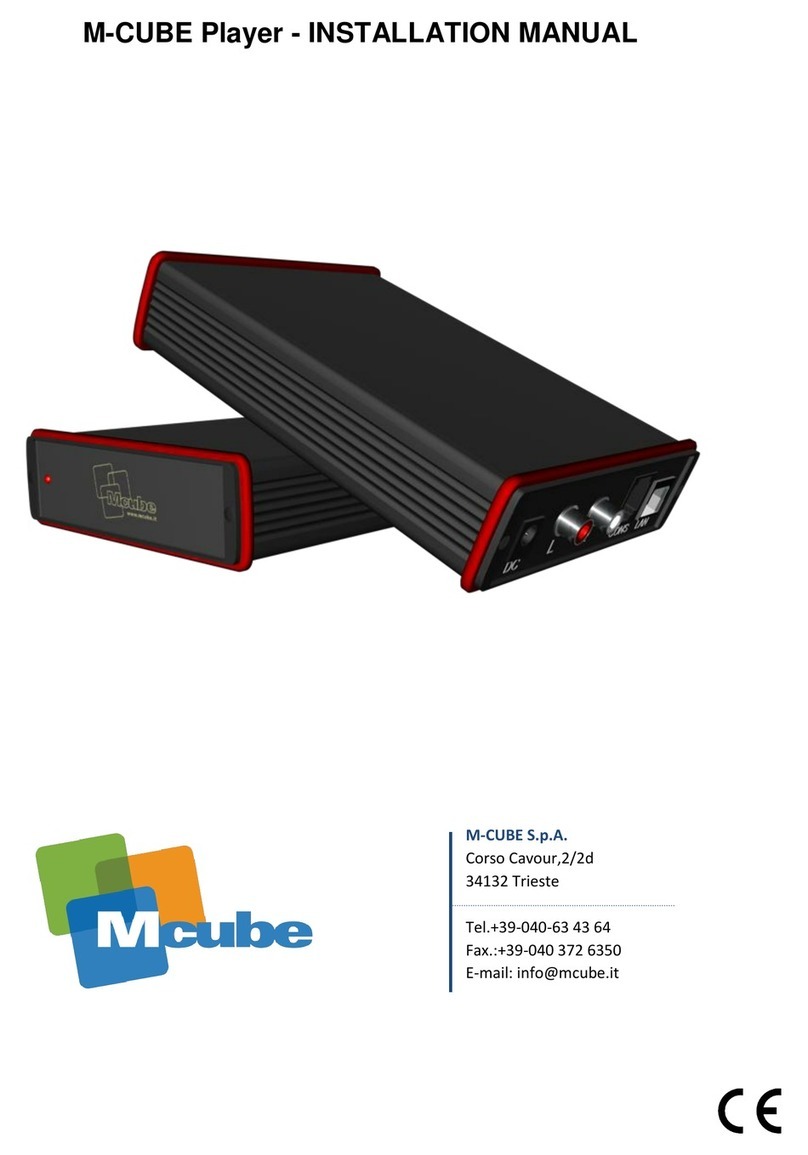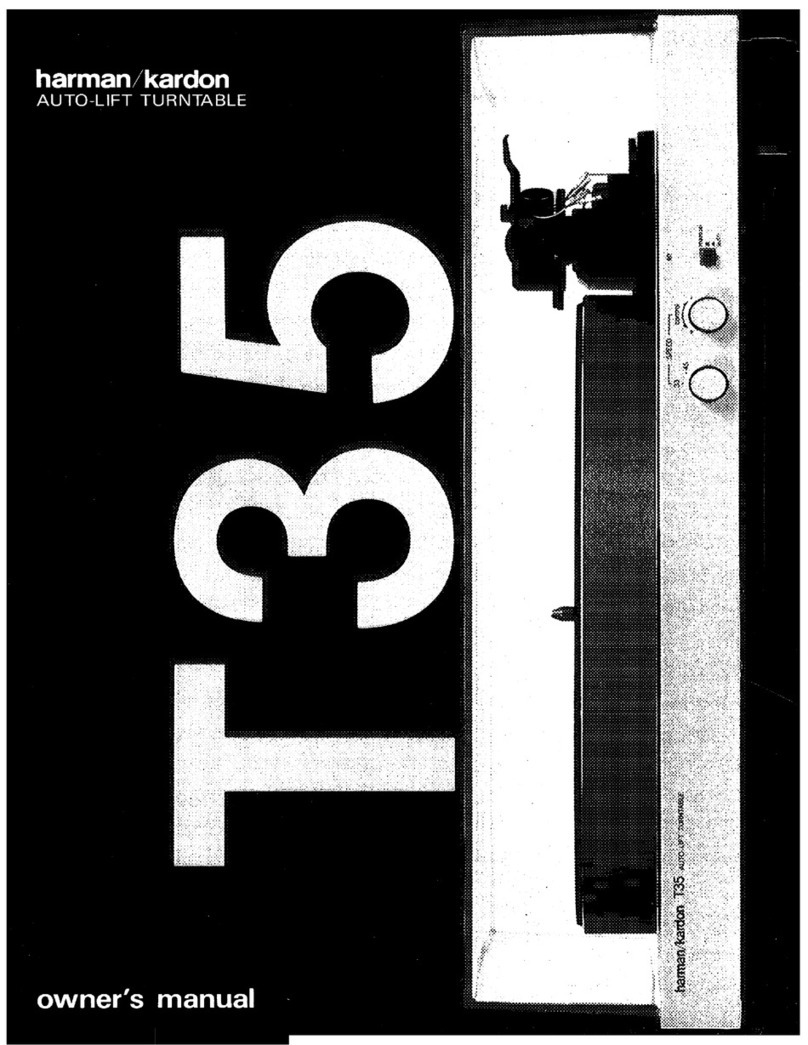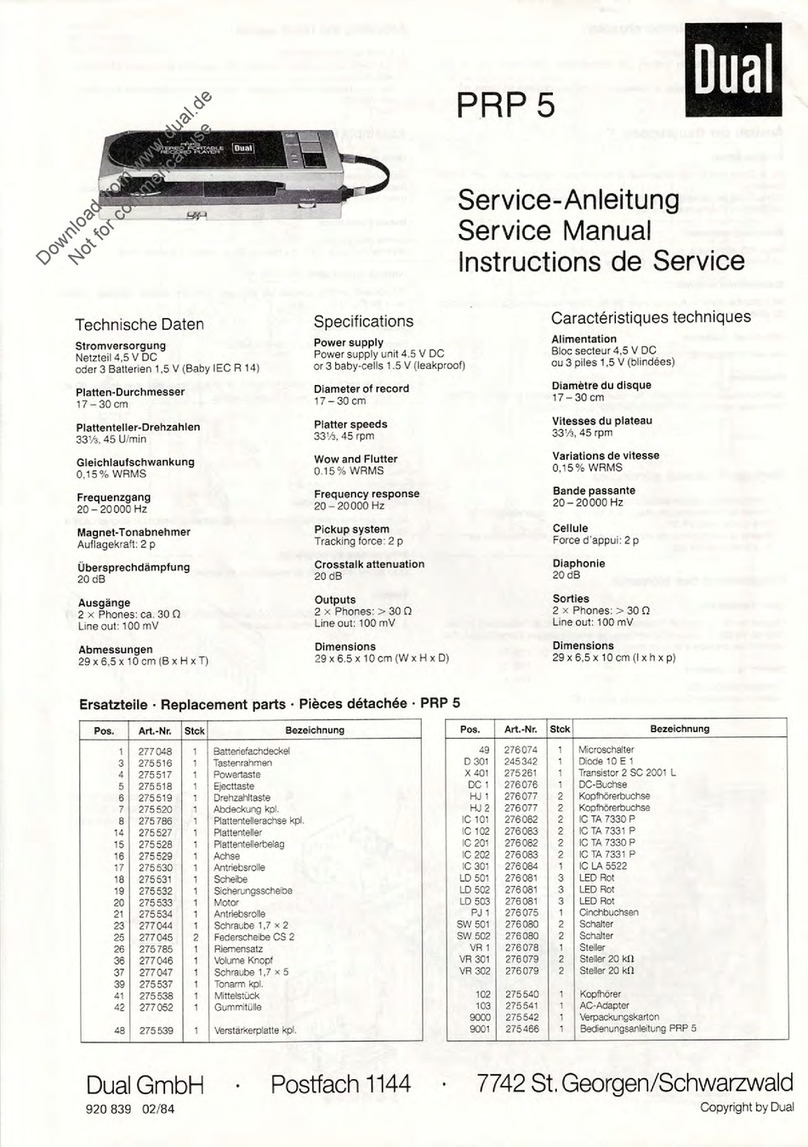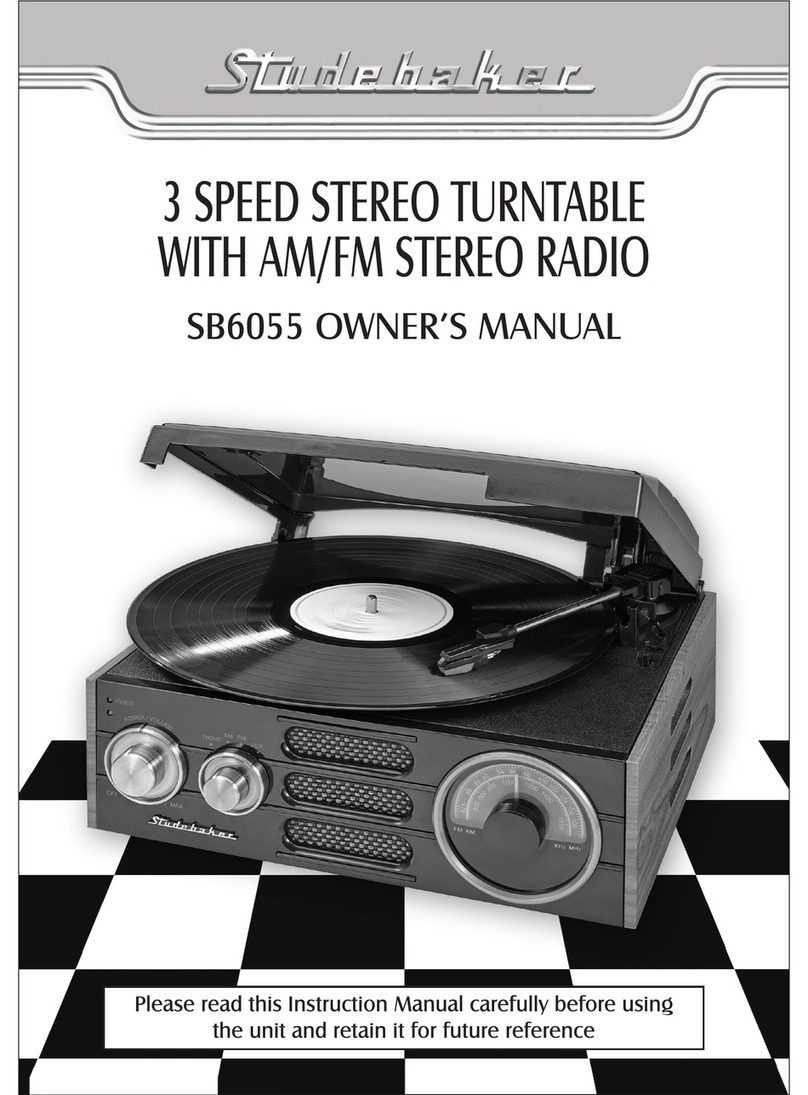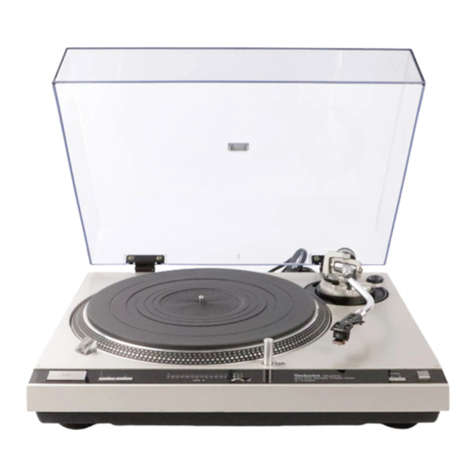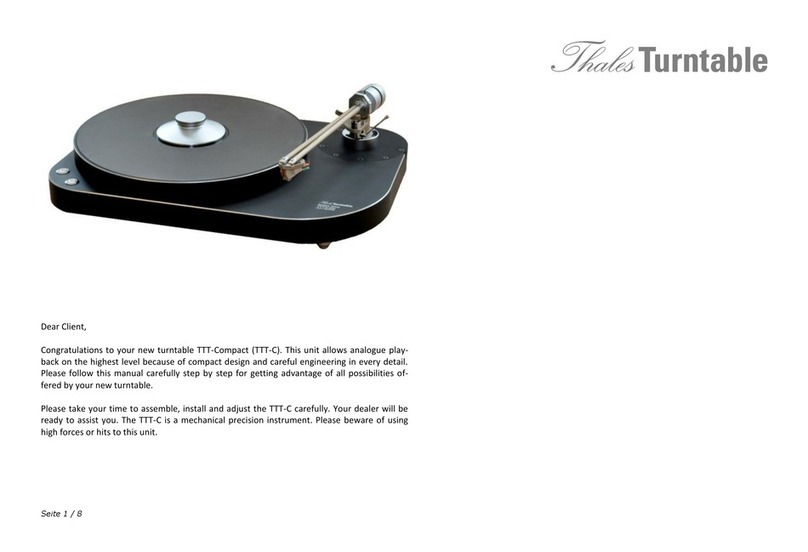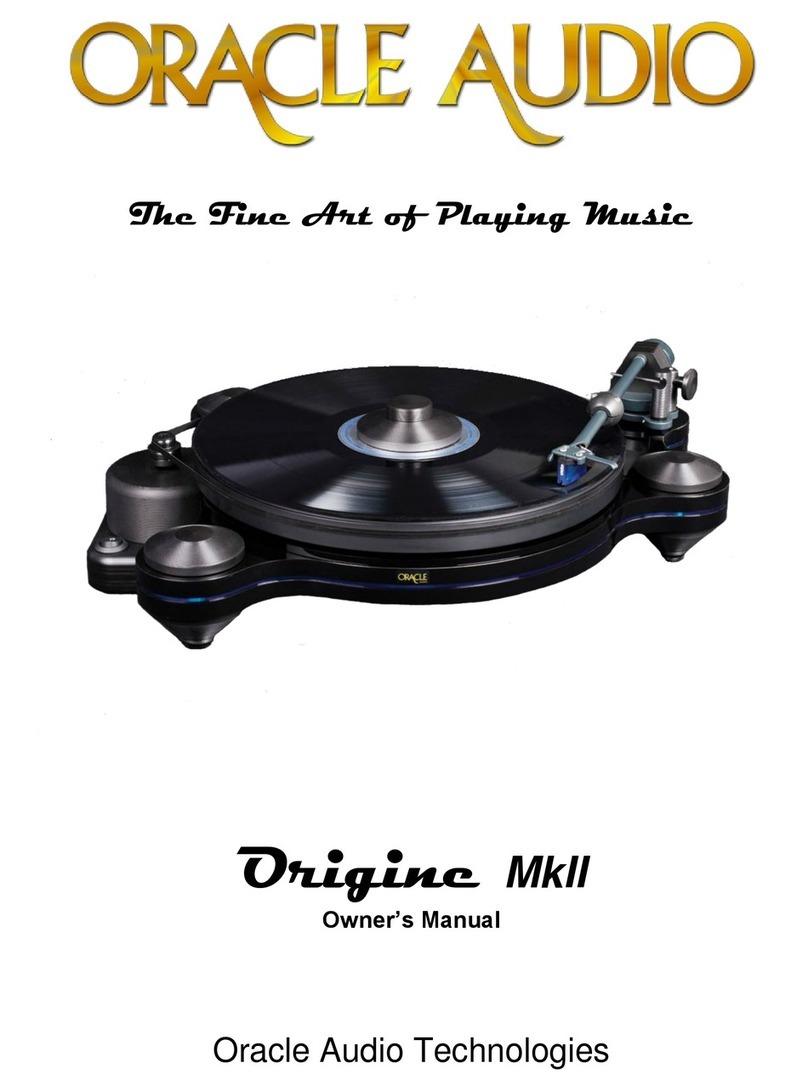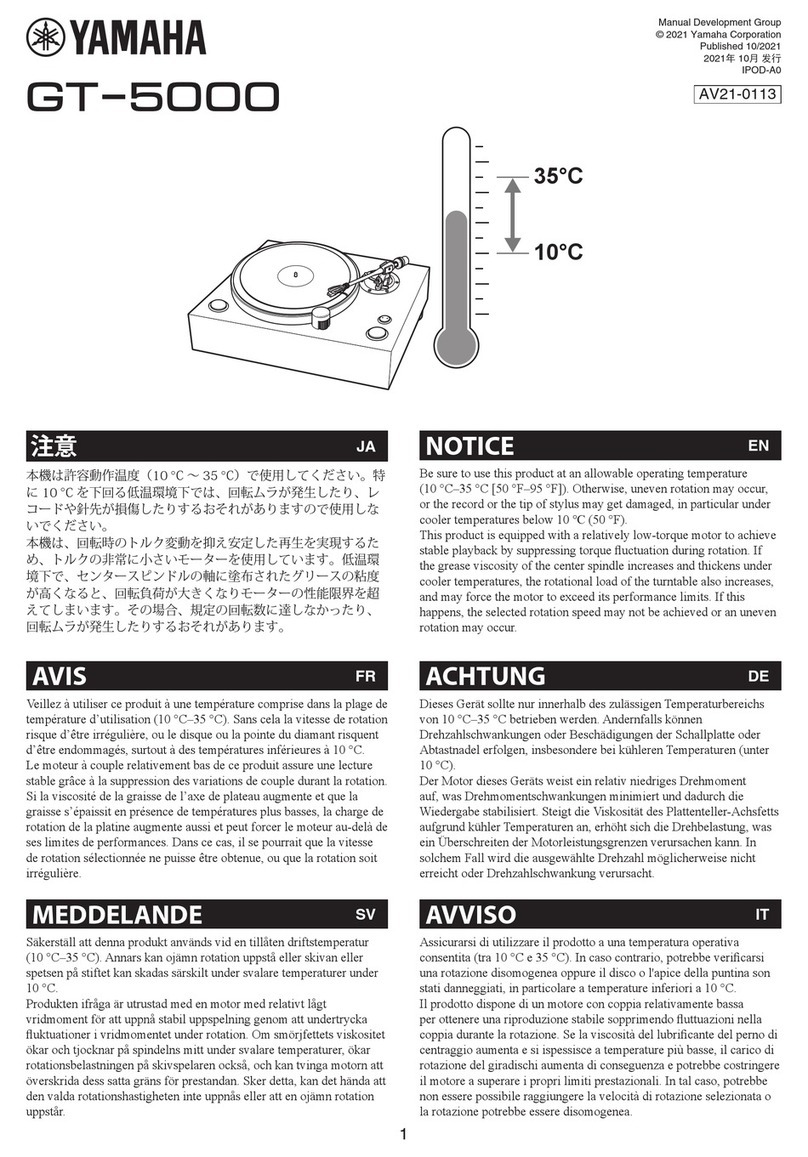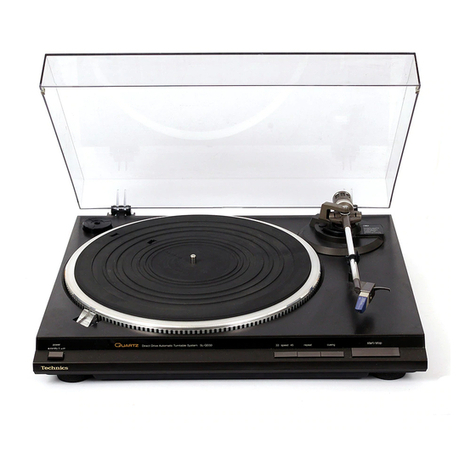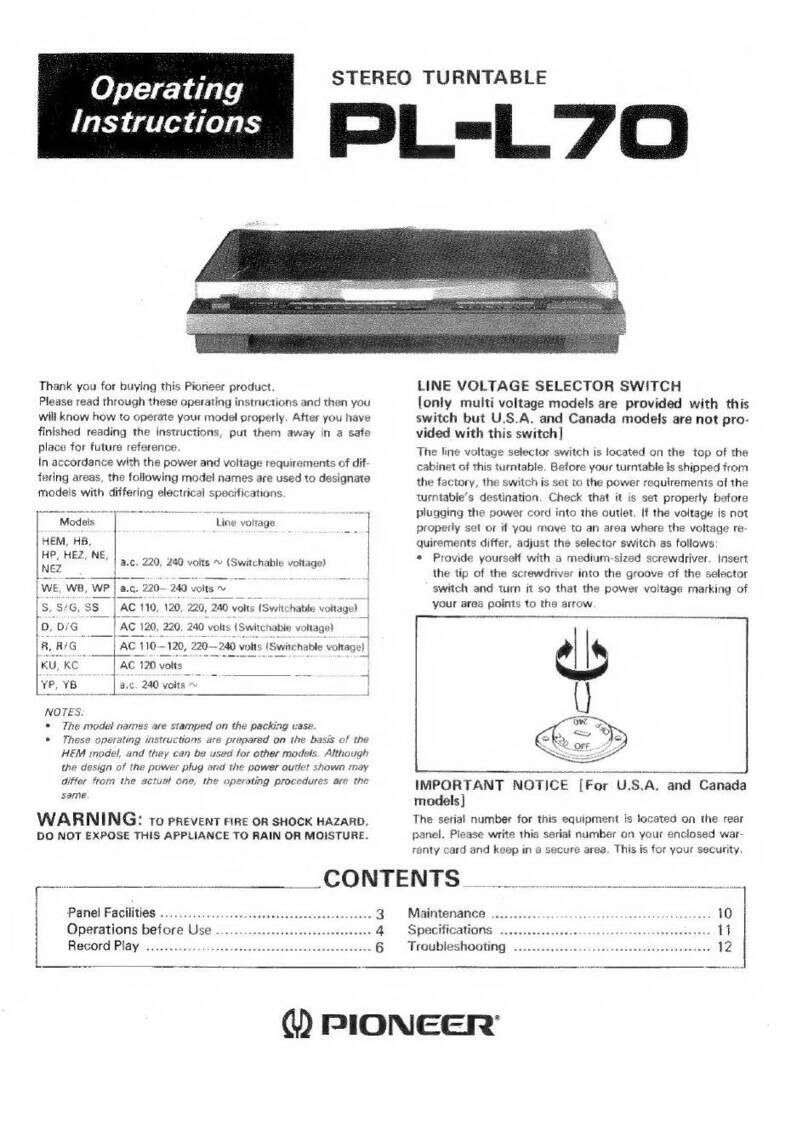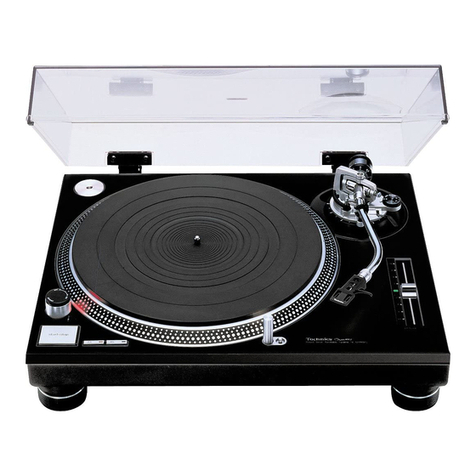Swissonor TA10 User manual

Swissonor.ch « G e a r f r o m v i n y l t o e a r »
User manual TA10 (on mounting plate 3.3)
Please read carefully before mounting yourTA10.
Thank you for choosing our TA 10 tonearm, newly developed on Thorens TP14 design, but close to the BTD-12 S
outfit.
This unit, like every Swissonor product, is the fruit of several years of development and optimisation. Please note
that the precision instrument ball bearings need hours of burn-in before giving best results.
Instruction for assembling with Thorens TD 124
The pre-assembled TA10 is a plug-and-play version easy to install.
Fine-tuning possibilities only for skilled craftsmen are identified in italic.
1. Tonearm- mounting plate assembly.
1. Switch off and lift off the power cord and the phone cables from your TD 124. Disassemble
carefully the existing tonearm board.
2. Check clearing around the TA 10's tonearm base. The delicate wires shall not be restricted,
nor subject to friction. The RCA socket holder can be positioned 360° rotation .
This may be necessary for some types of solid console. Please tighten the 36mm
nut firmly, taking care about the tonearm wires.
3. Put the arm-plate/arm-assembly softly on the TD 124 frame and align mounting holes with
screw threads on TD 124 frame.
4. Use one washer under each screw-head.
For all tonearms you can adjust parallelism of tonearm board and the TD124 frame, placing
washers between the silent blocks and the TD124 frame.
5. Screw the three M5 screws only extremely slightly (use only your fingertips to
turn the screwdriver , don’t compress the damping blocks.
6. Fine adjust parallelism between tonearm board and TD 124 chassis by tightening a little more
where the board is “too high” and unscrew softly where the board is too low. Firm
tightening will adverse the performance of the damping blocks, or even destroy
them.
Check
parallelism

2. Cartridge-headshell assembly
Assemble cartridge and SME-Type headshell. Check parallelism of pick-up and headshell.
The industry standard for he distance between diamond stylus and headshell mounting flange
is 50 mm. Hence, the Ortofon SPU type GM cartridges are built to 52 +/- 0.5 mm and cannot
be adjusted in their headshell. Therefore, factory adjustment of TA10 is made for 52 mm
distance instead of standard 50 mm, to match these cartridges.
If you use other cartridge types than Ortofon SPU GM, please set distance to 52 mm, sliding
the cartridge in the supplied headshell to the matching position (take care about cartridge
alignement, too, before locking the screws).
Alternatively, you can change the pivot to spindle distance of the TA10:
Carefully unlock the hex nut under the tonearm plate with supplied 36 mm key,
adjust overhang to 15 mm and tigthen firmly, taking care about the tonearm
wires.
Another valid method is to check and adjust tracking error using a
commercially available tracking gauge.
3. Azimut adjustment
Check parallelism between tonearm and disc surface (use a disc with average thickness, which
will correspond to about 150g of disc weight).
Advanced fine adjustment: Height can be adjusted when unscrew the two set-
scews in the tonearm flange.
Warning: Hold the tonearm with one hand during adjustment. The tonearm
could fall and tear off the tonearm wires.
The 2mm allen key is supplied with the tonearm.

4. Tracking force adjustment
Check and adjust tracking force using a special cartridge tracking force balance. Adjust to
medium to maximum value of indicated range (see the cartridge manufacturer's notice). To
low tracking force can damage disc surface.
Unlock the four set-screws in the counterweight, move the counterweight until you get the
correct tracking force. Then tighten sligtly the three set screws. Take care to get the same pre-
load on every screw.
Advanced sound tuning: If you leave off the o-ring under the four set screws
leave the other o-ring in place), then you can screw carefully on all four screws
until the screw tips touch the aluminium tonearm tube. Check coaxial position
of the screws. Tighten very sligtly only, firm tightening will damage the arm
tube. Direct contact between crew Tipps and tonearm tube will result in more
dynamic, lively sound.
For transport or shipping, you have to leave off the counterweight, as shocks with
counterweight on would damage the precision bearings.
5. Antiskating adjustment
Gliss the antiskating weight's loop onto the antiskating bar (which is situated on the front side
of the tonearm body). The rope has to gliss over the fixed antistatic bar, in the nearest
perpendicular position.
The antiskating weight is introduced into the slot of the tonearm plate, and shall not touch the
tonearm mountig plate or other parts (turntable plinth).
The antiskating bar position can be adjusted using a 3mm allen key not
delivered with the tonearm)
The best way to find optimum antiskating compensation is to use a tracking test record disc.
Both channels shall be distortion free up to the highest level (depending on cartridge and
tracking force), and at even higher level they should distord at the same time. If (for example)
the the right channels distords first, enhance antiskating compensation, and vice versa.
The antiskating can be adjusted for tracking forces from about 2 to 4 grams.
Approx. Scale: 4 3.5 3 2.5 2 grams

6. Adjusting the tonearm-lift
Adjust hight and position (in rotating sense) of the lift. Use 2mm allen key. The correct
position in height is when the tonearm in his armrest just touches the lift.
The correct position in the sense of rotation is when the lever does not touch the antiskating
rope.
7. Cabling
First connect the ground wire to the preamplifiers ground terminal. Then connect the RCA
plugs (respect red/black coulour code, red for right and black for left channel) to the phono-
preamplifier,
The cable has printed >, indicating the direction of earth distribution from the preamplifier
towards the tonearm. (the arrow has to show towards the tonearm).
Advoid ground connection between turntable and ground earth, which would result in hum
due to ground loop.
8. Final test
Check tracking ability using a test record or a music record containing extreme modulation.
Listening with records in good condition should result in no audible distortion, from outer to
inner groove.
If eveything is ok, you can listen now to your preferred record and enjoy lowest distortion
combined to three-dimensional sounstage and uncompressed wideband sound.
Swissonor.ch Frei, CH-1256 Troinex, Fax 0041/ 22 784 63 69
http://www. wi onor.ch, info@ wi onor.ch
Table of contents
